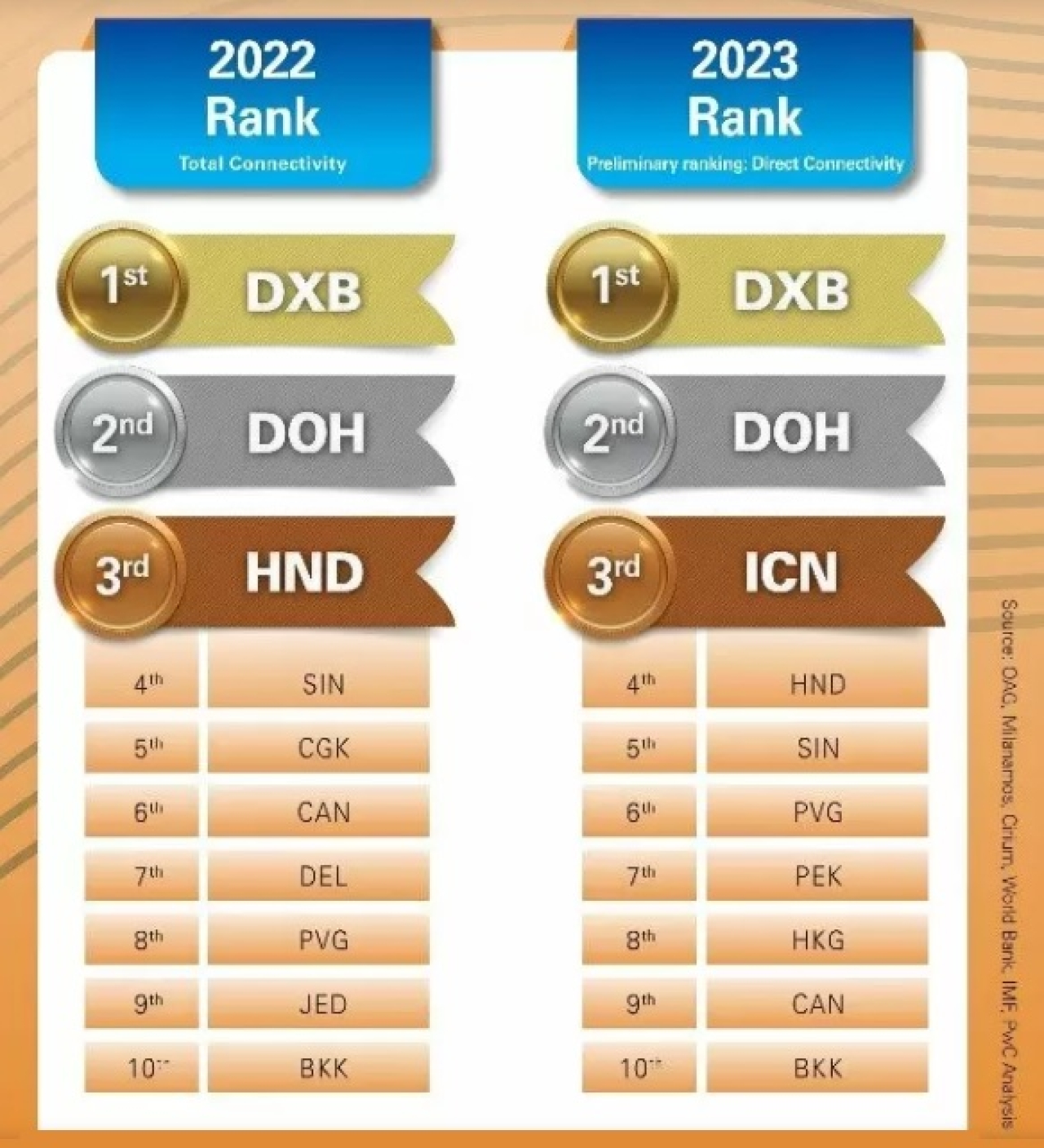Connectivity Grows by 26% in the Middle East but Falls by 38% in Asia Pacific
Kevin Rozario
September 20, 2023

© Susan Q Yin / Unsplash
A new report from Airports Council International’s regional body, Asia-Pacific and Middle East (ACI APAC & MID), indicates that air connectivity in the Middle East grew by 26% in 2022 versus 2019, with strong recovery to destinations in North America, Asia-Pacific, and Africa. Low-cost carriers (LCCs) drove much of the growth.
On the downside, Asia-Pacific saw a big decline in its connectivity of 38% due to extended travel restrictions resulting from COVID19, as well as geopolitical tensions, economic downturns, rising airfares, limitations on air traffic rights, and slot constraints at airports.
ACI APAC & MID noted in a statement: “This decline in connectivity, coupled with increasing airfares, illustrates its negative impact on the recovery of air travel and the resultant inconvenience to travelers. From the passenger’s perspective, connectivity is essential for mobility, providing significant economic and social advantages.”
The association’s Airport Connectivity Report, developed in partnership with PwC, measures passengers’ ability to access the global air transport network. It looks at both direct and indirect routes, and also factors in the quality of service of each connection, such as destination choice, service frequency, onward connectivity, and price. The report covered 100 airports that accounted for almost 60% of the combined passenger traffic in Asia-Pacific and the Middle East in 2019.
Dramatics Differences
While direct connectivity from Asia-Pacific still lagged well behind in 2022, despite LCCs driving capacity growth, the better performers in the region were airports with annual passenger volumes of 1-40 million per year. Larger airports were impacted by China’s zero-COVID strategy and blanket ban on international travel which affected connecting hubs like Kong Kong International, Seoul Incheon, and Singapore Changi.

© ACI APAC & MID
In the Middle East, mid-sized airports also came out on top in growth terms. Riyadh’s King Khalid International stood out with connectivity up by 75% while Qatar’s Hamad International Airport saw it jump by 42%. In absolute terms, Dubai International retained its top ranking, with Hamad International in second place across Asia-Pacific and the Middle East. Japan’s Tokyo Haneda Airport took the third spot.
Some Positive Signs for 2023
Preliminary data for this year are showing significant improvements in seat capacity to China, rebounding by 937% in August 2023 compared to August 2022 “but still with a large margin to grow in 2024” said ACI APAC & MID.
While Macao, Hong Kong, and Singapore topped the list in 2019, 2022 saw Oceania countries like French Polynesia, Australia, and New Zealand, along with Middle Eastern countries such as Qatar, the UAE, and Bahrain at the forefront.
So far in 2023, Dubai International and Incheon International airports lead the preliminary direct connectivity ranking for 2023 in the Middle East and Asia-Pacific respectively.
Commenting on the report, Stefano Baronci, the Director General of ACI Asia-Pacific & Middle East said: “This study is an invaluable tool for the industry and policymakers to adopt the use of air connectivity indicators to appraise the performance and sustainable development of the aviation industry and its economic and social impact on countries.
“It also shows how to prioritize positive outcomes for consumers, rather than simply focusing on the price-determination function, for the benefit of all aviation stakeholders and the traveling public. The next step will be for ACI Asia-Pacific & Middle East to work with each government to promote aviation market liberalization, visa simplification, and investment in infrastructure—with a focus on the environment, and innovation of services.”
Key aviation markets like China and India, along with fast-growers such as the Philippines and Vietnam, have much lower flying propensity than Europe and North America. Favorable factors like GDP growth, large populations, and a rising middle class could change that over the longer term to deliver strong air connectivity growth between 2030-2040.
For that to happen, more infrastructure development will be needed as well as the easing of airspace congestion to accommodate the expected growth in traffic.
